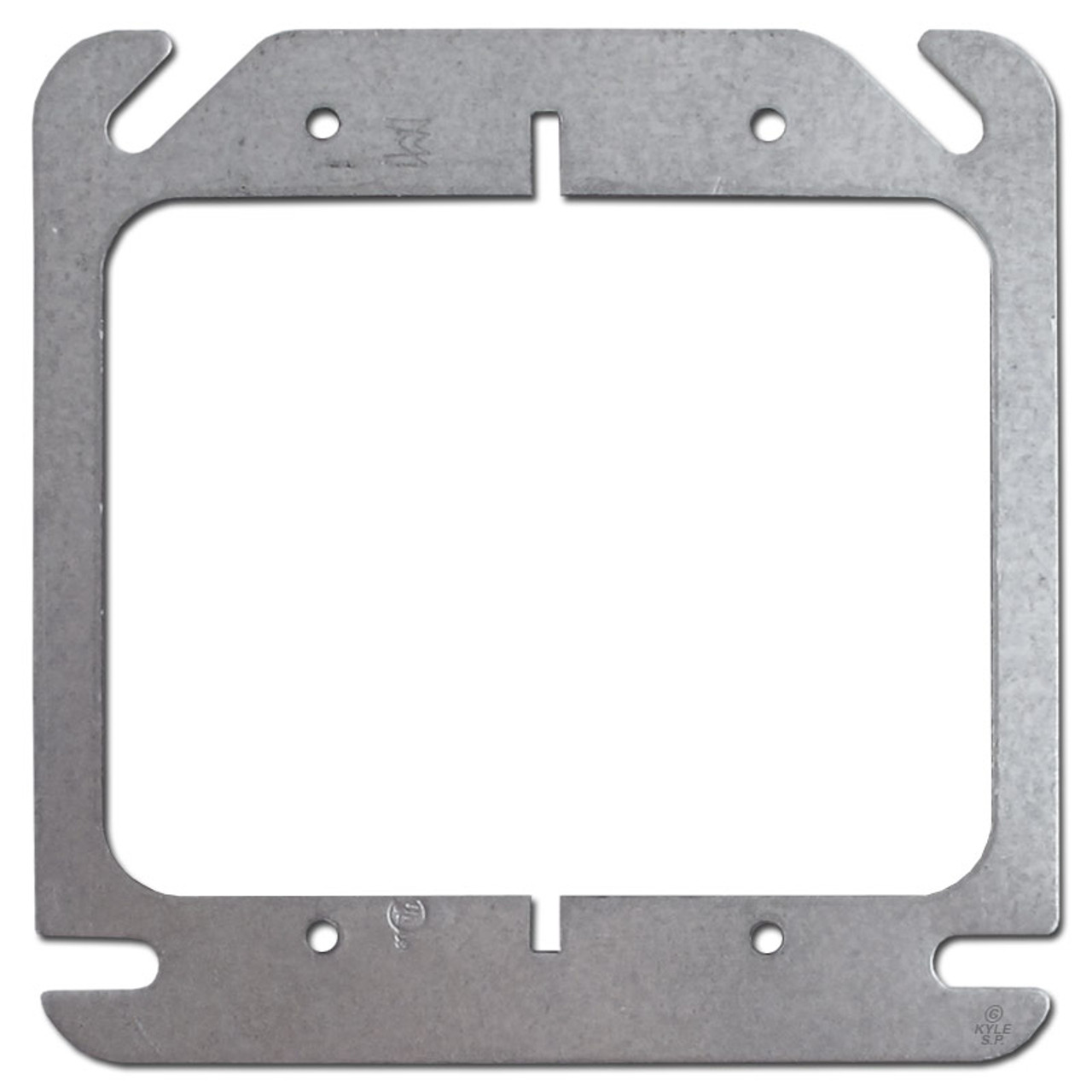

Cable connectors that have their clamping mechanism outside the box are not counted. One or more internal cable clamps count as a single conductor volume per Table 314.16(B), based on the largest conductor that enters the box.
#MINIMUM CUBIC INCHS OF PLASTER RINGS FOR FREE#
Unbroken conductor having a length of at least twice the minimum length required (12 in.) for free conductors in Sec. Each unbroken conductor that runs through a box and each conductor that terminates in a box counts as a single conductor volume per Table 314.16(B). 314.16(B)(1) through (B)(5) are added to determine the total volume of the conductors, devices, and fittings: The calculated conductor volumes determined by Sec. Conductors that originate and terminate within the box, such as pigtails, aren’t counted at all.ĮGCs and up to four 16 AWG and smaller fixture wires can be omitted from box fill calculations if they enter the box from a domed luminaire or similar canopy, such as a ceiling paddle fan canopy. Raceway and cable fittings, including locknuts and bushings, aren’t counted for box fill calculations. Table 314.16(A) doesn’t consider switches, receptacles, luminaire studs, luminaire hickeys, cable clamps, or EGCs. Many items that might go in a box are not counted in the fill calculations. Each barrier - if not marked with its volume - is considered to take up ½ cu. Where a box is provided with barriers, the volume is apportioned to each of the resulting spaces. Therefore, the total volume of assembled parts = 21 + 21 + 7.50 = 49.50 cu.

What’s the total volume of a 4 × 4 × 1½ outlet box, with a 4 × 4 × 1½ extension ring, and a cover having a volume of 7.50 cu. The total volume includes only those parts that are marked with their volumes in cubic inches or included in Table 314.16(A) ( Fig. The volume of a box is the total volume of its assembled parts, including plaster rings, raised covers, and extension rings. These items aren’t reflected in Table 314.16(A). If the outlet box contains switches, receptacles, luminaire studs, luminaire hickeys, cable clamps, or equipment grounding conductors (EGCs), then you must make an allowance for these items per Sec. square box permits nine 12 AWG conductors the insulation type isn’t a factor when calculating box fill. square outlet box will be required for three 12 AWG THW and six 12 AWG THHN conductors? A quick check of Table 314.16(A) reveals that a 4 in. (2) Outlet box size required for the given number of conductors.Ĭonsider this sample problem: What size 4 in. (1) Number of conductors permitted in the outlet box, or When all the conductors in an outlet box are the same size (insulation doesn’t matter), you can use Table 314.16(A) to determine the: 314.16(A), be less than the volume requirement as calculated in Sec. In no case can the volume of the box, as calculated in Sec. 314.30(A).īoxes containing 6 AWG and smaller conductors must be sized in an approved manner to provide free space for all conductors, devices, and fittings. The requirements for sizing handhole enclosures are in Sec. The requirements for sizing boxes and conduit bodies containing conductors 4 AWG and larger are found in Sec. The volume taken up by conductors, devices, and fittings in a box must not exceed the box fill capacity. So how small is too small, and what size is adequate?Īn outlet box is generally used for the attachment of devices and luminaires and has a specific amount of space (volume) for conductors, devices, and fittings. A 10 × 10 × 4 box for three 12 AWG conductors would prevent an undersizing problem, but it would also be ridiculously big. But you can’t just oversize boxes “to be on the safe side” because that wastes space and money. The consequences of undersizing outlet boxes can include damaged wiring, overheating, and even electrical fires.


 0 kommentar(er)
0 kommentar(er)
